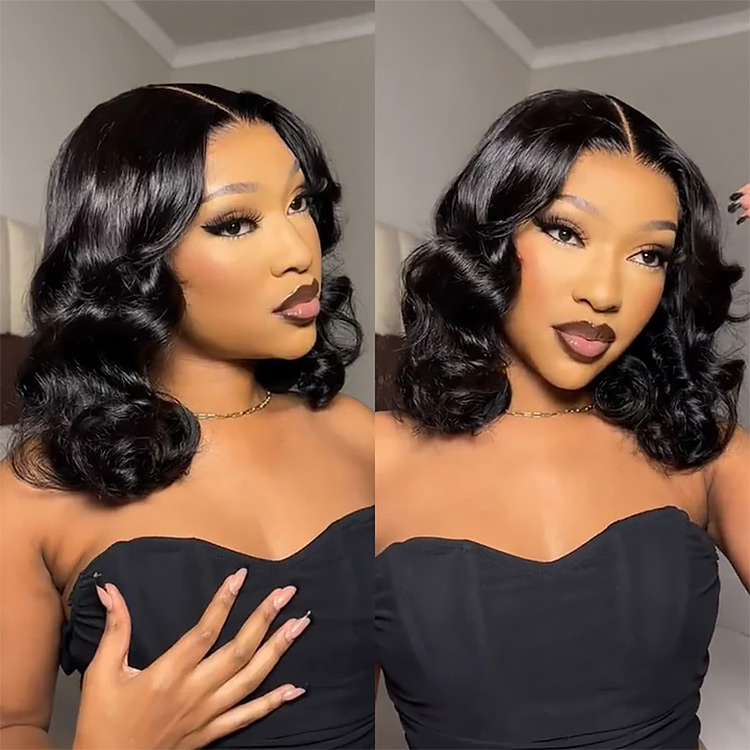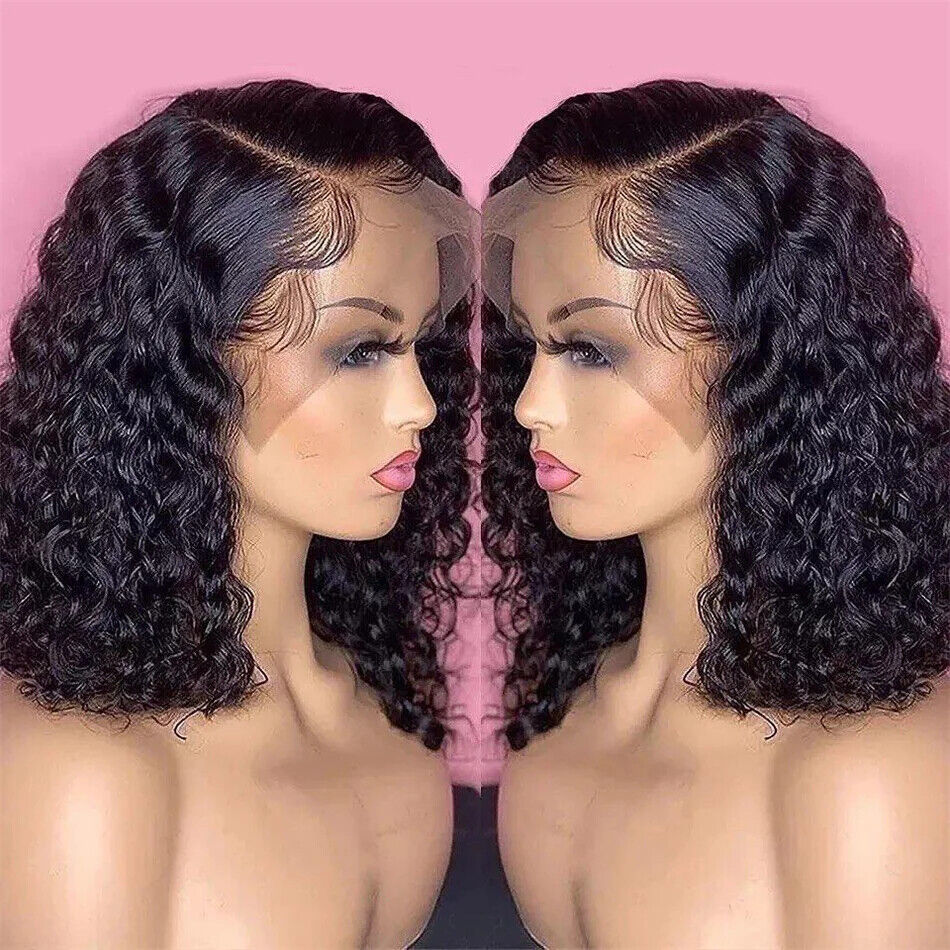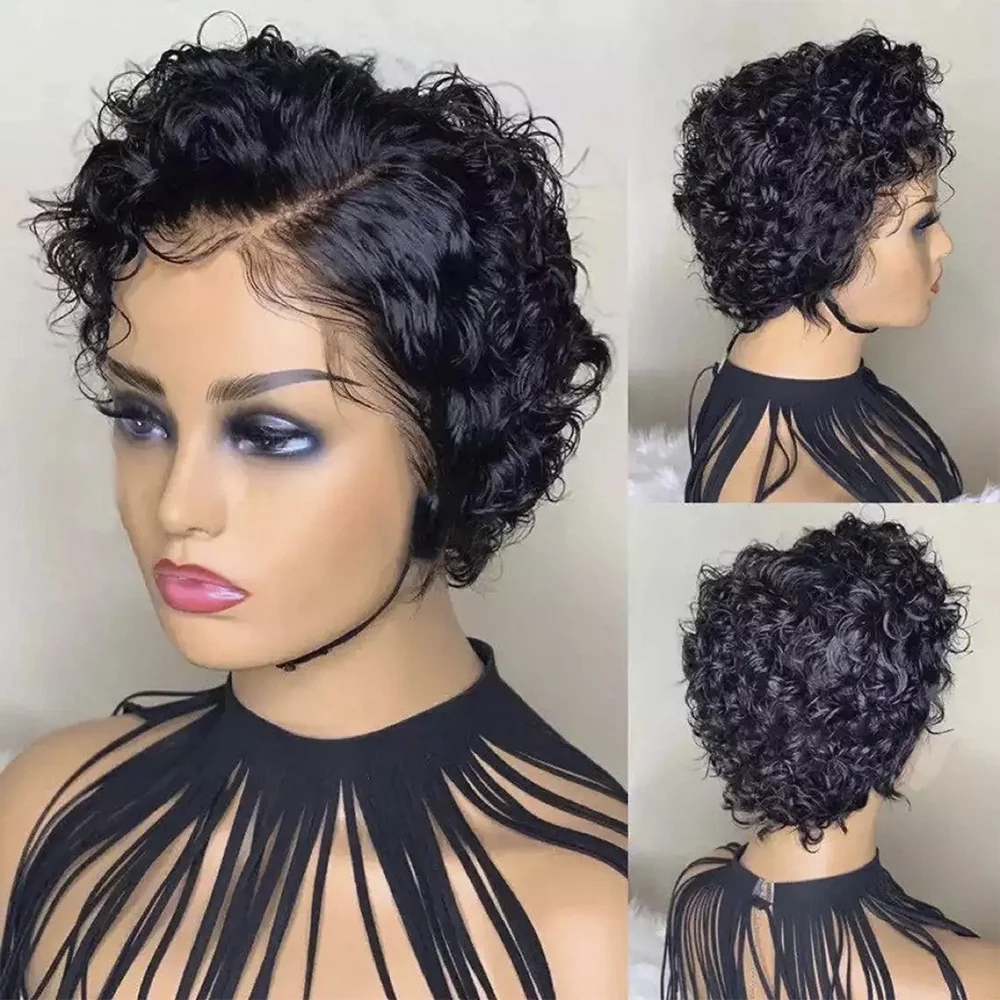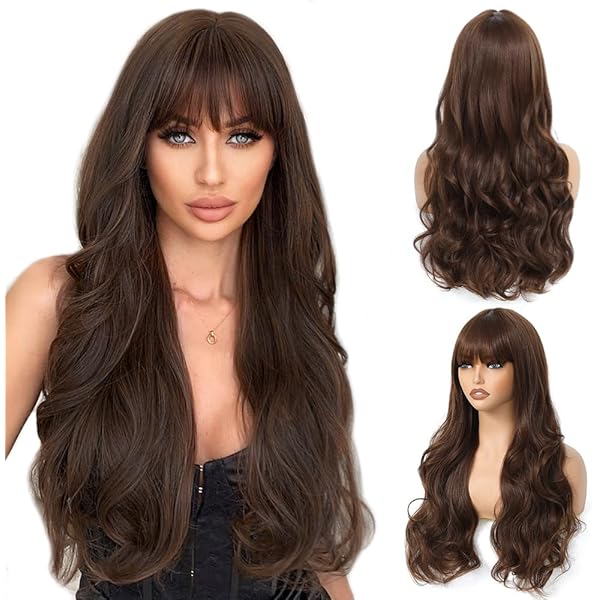
Short Hair Wig: Style, Versatility, and Confidence
The Rise of Short Hair Wigs in Fashion and Beauty
Short hair wigs have surged in popularity, revolutionizing the world of fashion and beauty. These versatile accessories offer wearers the opportunity to dramatically change their look without committing to a permanent haircut. The appeal of short hair wig lies in their ability to provide a fresh, chic appearance with minimal styling effort. Celebrities and influencers have embraced short hair wigs, showcasing their versatility on red carpets and social media platforms.
This trend has trickled down to everyday fashion enthusiasts, who now view short hair wigs as a must-have accessory. The rise of short hair wigs also reflects changing attitudes towards beauty and self-expression. More people are experimenting with different looks, and wigs offer a low-risk way to do so. Short styles, in particular, have gained traction for their bold and confident aesthetic.
Additionally, advancements in wig technology have made short hair wigs more comfortable and natural-looking than ever before. Improved materials and construction techniques allow for seamless blending with natural hairlines. This has led to increased acceptance and popularity of wigs in general, with short styles leading the charge. The fashion industry has taken notice, with designers incorporating short hair wigs into runway shows and editorial shoots. As a result, short hair wigs have become not just a practical solution for hair loss but a bonafide fashion statement.

Types of Short Hair Wigs: From Pixies to Bobs
Short hair wigs come in a variety of styles, catering to different preferences and face shapes. The pixie cut wig stands out as one of the most popular options. This ultra-short style exudes confidence and showcases facial features beautifully. Pixie wigs often feature textured layers, allowing for versatile styling options. Next, the bob wig offers a classic short hair look. These wigs typically fall between the chin and shoulders, providing a timeless and sophisticated appearance.
Bob wigs come in various forms, including straight, wavy, and asymmetrical styles. For those seeking a slightly longer option, the lob (long bob) wig provides a perfect middle ground. This style usually reaches the collarbone, offering more styling versatility than shorter options. Textured short wigs, such as tousled or messy styles, have gained popularity for their effortless, lived-in look. These wigs often feature layers and uneven ends to create a natural, carefree appearance.
Cropped wigs represent the shortest end of the spectrum, with styles that closely hug the scalp. These wigs work well for those wanting a bold, edgy look. Tapered wigs offer a gradual length change, typically shorter at the back and sides with more length on top. This style provides a sleek, modern aesthetic. Lastly, short curly or wavy wigs add volume and texture, suiting those who want a more dynamic short hair look. Each of these short hair wig types offers unique benefits, allowing wearers to choose a style that best complements their features and personal taste.
Materials and Construction: The Backbone of Quality Short Hair Wigs
The quality of short hair wigs largely depends on the materials used and the construction methods employed. Human hair wigs reign supreme in terms of natural look and feel. These wigs use real human hair, allowing for the most authentic appearance and styling versatility. Remy human hair, where all strands face the same direction, is particularly prized for its superior quality. Synthetic wigs, on the other hand, offer affordability and low maintenance. Advanced synthetic fibers can closely mimic the look of human hair while requiring less styling effort.
Some wigs blend human and synthetic hair, aiming to balance natural appearance with convenience. The cap construction plays a crucial role in the wig’s comfort and natural look. Lace front wigs feature a sheer lace panel at the front, allowing for a natural-looking hairline. Full lace wigs extend this feature to the entire cap, providing the most styling versatility. Monofilament caps use a thin, breathable material that creates the illusion of hair growing from the scalp.
Hand-tied wigs, where each hair is individually tied to the cap, offer the most natural movement and parting options. Some short hair wigs incorporate silk or lace tops, which mimic the appearance of a natural scalp. The density and distribution of hair on the cap also affect the wig’s appearance. Short hair wigs often require strategic placement of hair to achieve a natural, voluminous look without appearing bulky. Understanding these materials and construction methods helps in choosing a short hair wig that best meets individual needs for comfort, style, and authenticity.

Choosing the Right Short Hair Wig for Your Face Shape
Selecting a short hair wig that complements your face shape can significantly enhance your overall appearance. Oval face shapes, considered the most versatile, suit almost any short hair wig style. For round faces, short wigs with volume on top and angular cuts help elongate the face. Pixie cuts with long, side-swept bangs or asymmetrical bobs work particularly well. Square face shapes benefit from short wigs that soften angular features.
Textured bobs or pixies with wispy edges can achieve this effect beautifully. Heart-shaped faces look stunning with short wigs that add width at the jaw line. Chin-length bobs or pixies with full, rounded bangs balance the face nicely. For diamond face shapes, short wigs that add volume at the cheekbones and chin create a harmonious look. Textured pixies or bobs with side-swept bangs work well for this face shape. Long face shapes benefit from short wigs that add width. Wavy bobs or pixies with full bangs can help create the illusion of a shorter, more balanced face.
When choosing a short hair wig, consider not just the overall style but also specific features like bangs, layers, and texture. These elements can be strategically used to highlight your best features and create a flattering appearance. It’s also important to remember that while these guidelines can be helpful, personal preference and confidence play a significant role in choosing the right short hair wig. Trying on different styles and consulting with a wig specialist can help in finding the perfect short hair wig for your unique face shape and personal style.
Styling and Maintaining Short Hair Wigs for Longevity
Proper styling and maintenance are crucial for keeping short hair wigs looking their best. For human hair wigs, gentle washing with specialized wig shampoo and conditioner helps maintain softness and shine. Synthetic wigs require less frequent washing but benefit from regular brushing to prevent tangling. When styling human hair short wigs, heat tools can be used cautiously. However, it’s essential to use a heat protectant spray and keep temperatures low to prevent damage. Synthetic wigs typically can’t withstand heat styling, but some heat-friendly options are available.
For both types, finger-styling often works well for short wigs, creating a natural, tousled look. Products like mousse, texture spray, or light-hold hairspray can help achieve different styles and maintain the desired look throughout the day. Storing short hair wigs properly extends their lifespan significantly. A wig stand or mannequin head provides an ideal storage solution, maintaining the wig’s shape when not in use. For travel, a satin-lined wig box protects the wig from crushing or tangling.
Regular trimming by a professional wig stylist helps maintain the shape of short hair wigs, especially for styles with precise cuts like pixies or bobs. This also prevents split ends in human hair wigs. For synthetic wigs, a fabric softener rinse can help restore shine and manageability. It’s important to avoid sleeping or showering while wearing a short hair wig, as this can lead to tangling and premature wear. By following these care and styling tips, short hair wigs can maintain their appearance and quality for an extended period, providing long-lasting style and confidence to the wearer.

The Psychological Impact of Wearing Short Hair Wigs
Wearing short hair wigs can have a significant psychological impact, often boosting confidence and self-esteem. For individuals experiencing hair loss due to medical conditions or treatments, short hair wigs provide a sense of normalcy and control over their appearance. This can be particularly empowering during challenging times. Short hair wigs also offer an opportunity for self-expression and experimentation with personal style. The ability to change one’s look quickly and easily can be liberating, allowing wearers to explore different facets of their personality.
Many people report feeling more confident and outgoing when wearing a short hair wig that they love. The low-maintenance nature of short hair wigs can reduce daily stress related to hair styling, giving wearers more time and energy to focus on other aspects of their lives. For some, wearing a short hair wig becomes a form of self-care, a way to present their best selves to the world. However, it’s important to acknowledge that adapting to wearing a wig can also come with challenges. Some individuals may initially feel self-conscious or worry about others noticing they’re wearing a wig.
Support groups and online communities for wig wearers can provide valuable emotional support and practical advice during this adjustment period. As wearers become more comfortable with their short hair wigs, many report a positive shift in their overall outlook and self-image. The convenience and style options offered by short hair wigs can lead to a renewed sense of freedom and creativity in personal expression. Ultimately, the psychological benefits of wearing short hair wigs often extend beyond mere appearance, contributing to improved overall well-being and quality of life.
Short Hair Wigs in the Entertainment Industry
The entertainment industry has long embraced short hair wigs as a tool for character transformation and visual storytelling. Actors frequently use short hair wigs to quickly change their appearance for different roles, allowing them to embody a wide range of characters without altering their natural hair. This versatility is particularly valuable in theater, where actors may need to switch characters rapidly during a performance.
In film and television, short hair wigs help maintain consistency in a character’s appearance throughout the production process, which may involve non-sequential filming. Celebrities often use short hair wigs on red carpets and at events to create memorable, headline-grabbing looks without committing to a permanent change. Music artists, too, incorporate short hair wigs into their stage personas, using them to craft iconic looks that become part of their brand. Behind the scenes, wig makers and stylists in the entertainment industry continually push the boundaries of wig technology and design.
Their innovations often trickle down to the consumer market, improving the quality and realism of short hair wigs available to the general public. The use of short hair wigs in entertainment also influences fashion trends, with fans often seeking to emulate the looks of their favorite stars. This has led to increased acceptance and popularity of wigs in everyday life. Additionally, the visibility of beautifully crafted short hair wigs in media has helped reduce stigma around wig-wearing, presenting it as a fashionable choice rather than merely a necessity for those experiencing hair loss.
The Role of Technology in Advancing Short Hair Wig Design
Technological advancements have significantly improved the design, production, and appearance of short hair wigs. 3D printing technology now allows for the creation of highly customized wig caps that perfectly fit an individual’s head shape. This results in more comfortable and secure-fitting short hair wigs. Advanced fiber technology has led to the development of synthetic hair that closely mimics the look and feel of human hair, improving the realism of synthetic short hair wigs.
Some synthetic fibers now incorporate heat-resistant properties, allowing for limited heat styling options previously only possible with human hair wigs. In the realm of human hair wigs, improved processing techniques preserve the hair cuticle, resulting in more natural-looking and longer-lasting wigs. Ventilation techniques, where individual hairs are hand-tied to the wig cap, have become more refined, allowing for more natural hair movement and realistic partings in short hair wigs. The integration of smart technology into wigs is an emerging trend, with concepts like temperature-regulating materials to enhance wearer comfort.
Virtual try-on technology, using augmented reality, now allows consumers to visualize how different short hair wig styles might look on them before making a purchase. This technology has become particularly valuable in the era of online shopping. Innovations in adhesive technology have led to stronger, more skin-friendly options for securing wigs, addressing a common concern for active wig wearers. As technology continues to advance, it promises to further enhance the realism, comfort, and functionality of short hair wigs, making them an increasingly attractive option for a wide range of consumers.

Short Hair Wigs and Cultural Expression
Short hair wigs play a significant role in cultural expression across various communities worldwide. In many African and African-American communities, short hair wigs offer a way to embrace natural hair textures while providing versatility in styling. These wigs often feature styles like cropped afros, textured pixies, or short curly cuts that celebrate natural hair aesthetics. In some Asian cultures, short hair wigs provide an opportunity to experiment with Western-inspired hairstyles without permanently altering natural hair.
This allows for cultural exploration while maintaining traditional longer hairstyles for important events or daily life. Within the LGBTQ+ community, short hair wigs can be a powerful tool for gender expression, allowing individuals to align their appearance with their gender identity without permanent changes. Drag performers often use bold, colorful short hair wigs as part of their artistic expression, challenging traditional gender norms through exaggerated and creative styles. In religious contexts, some women who cover their hair for modesty reasons use short hair wigs as a comfortable alternative under headscarves or wigs that provide full coverage.
The fashion industry has embraced the cultural significance of short hair wigs, featuring diverse models and celebrating a wide range of textures and styles in runway shows and advertising campaigns. This representation has helped to normalize and celebrate diverse hair types and styles. As global cultural exchange continues to influence fashion and beauty trends, short hair wigs serve as a medium for cross-cultural appreciation and exploration of different aesthetic traditions. By offering a low-commitment way to try styles from various cultural backgrounds, short hair wigs foster understanding and appreciation of diverse beauty standards.
The Future of Short Hair Wigs: Trends and Predictions
The future of short hair wigs looks promising, with several emerging trends and predictions shaping the industry. Sustainability is becoming increasingly important, with a growing demand for eco-friendly materials and production methods. This may lead to the development of biodegradable synthetic fibers and more ethical sourcing practices for human hair. Customization is expected to reach new heights, with 3D-printed wigs tailored to individual head shapes and facial features becoming more accessible. Advancements in fiber technology may result in synthetic hair that is virtually indistinguishable from human hair, offering the benefits of both in terms of look, feel, and manageability.
The integration of smart technology into wigs is likely to expand. Potentially including features like color-changing fibers or built-in styling tools. As remote work becomes more common, there may be a surge in demand for quick-change short hair wigs that allow for easy switching between professional and casual looks. The influence of social media and augmented reality is expected to grow, with virtual try-on experiences becoming more sophisticated and commonplace in the wig-buying process.
There may be an increased focus on multi-functional wigs that offer protection for natural hair while providing stylish short hair looks. As gender norms continue to evolve, the line between traditionally masculine and feminine short hair styles in wigs may blur, leading to more unisex options. The aging global population may drive innovation in wigs designed specifically for older adults, focusing on comfort and natural appearance. As short hair wigs continue to gain acceptance in mainstream fashion, collaborations between wig makers and high-end fashion designers could become more frequent, further elevating the status of wigs as fashion accessories.

